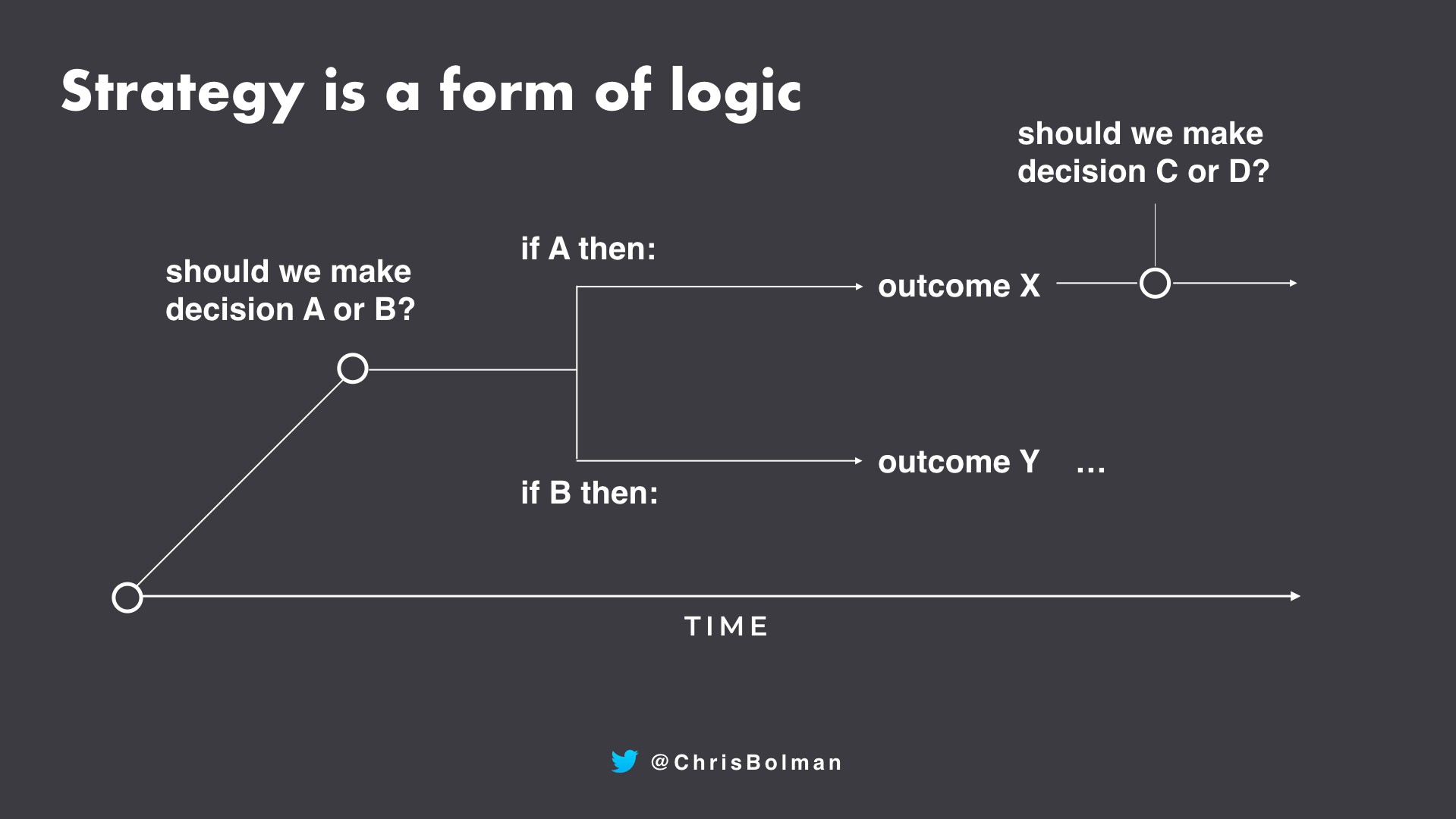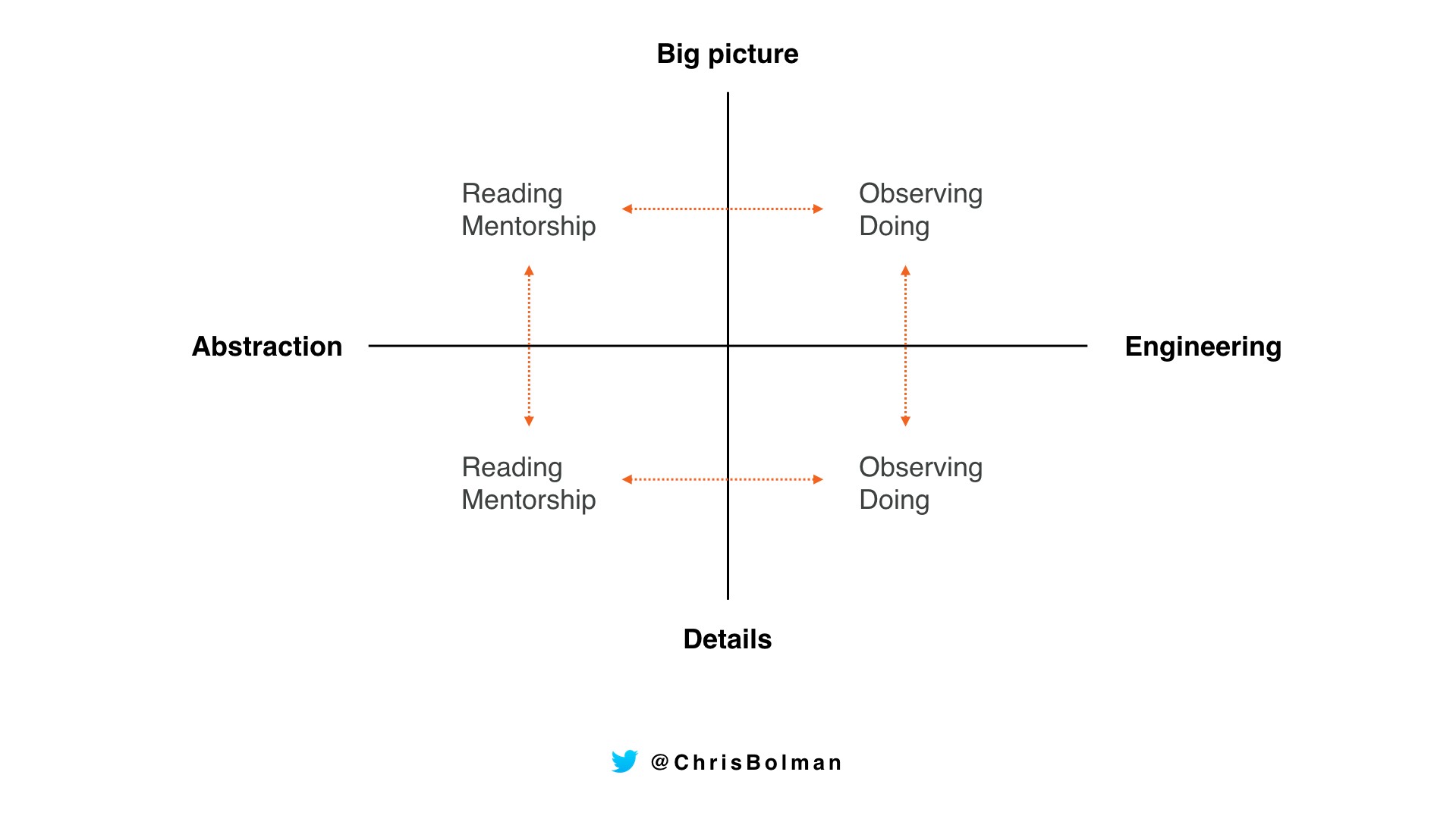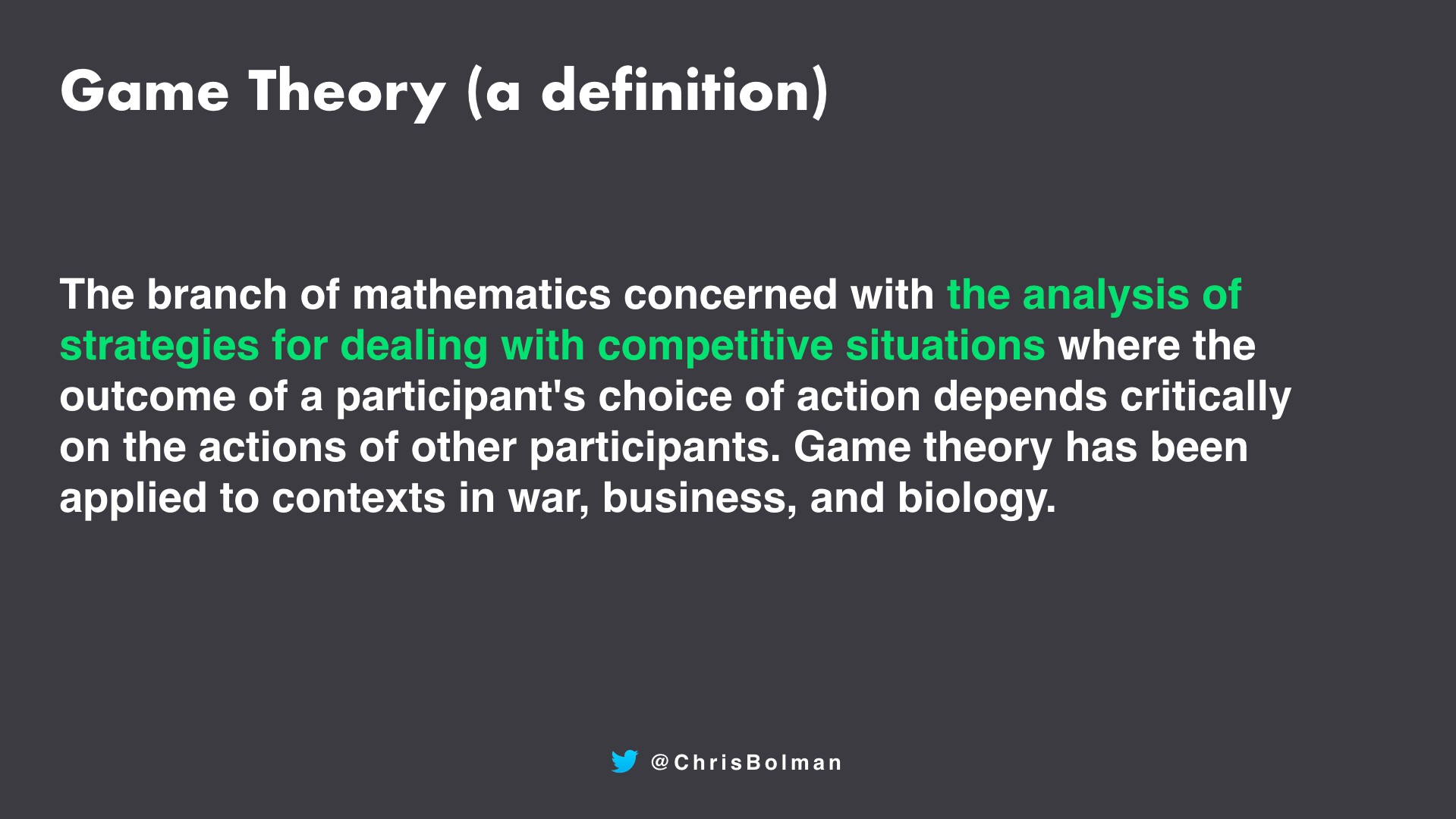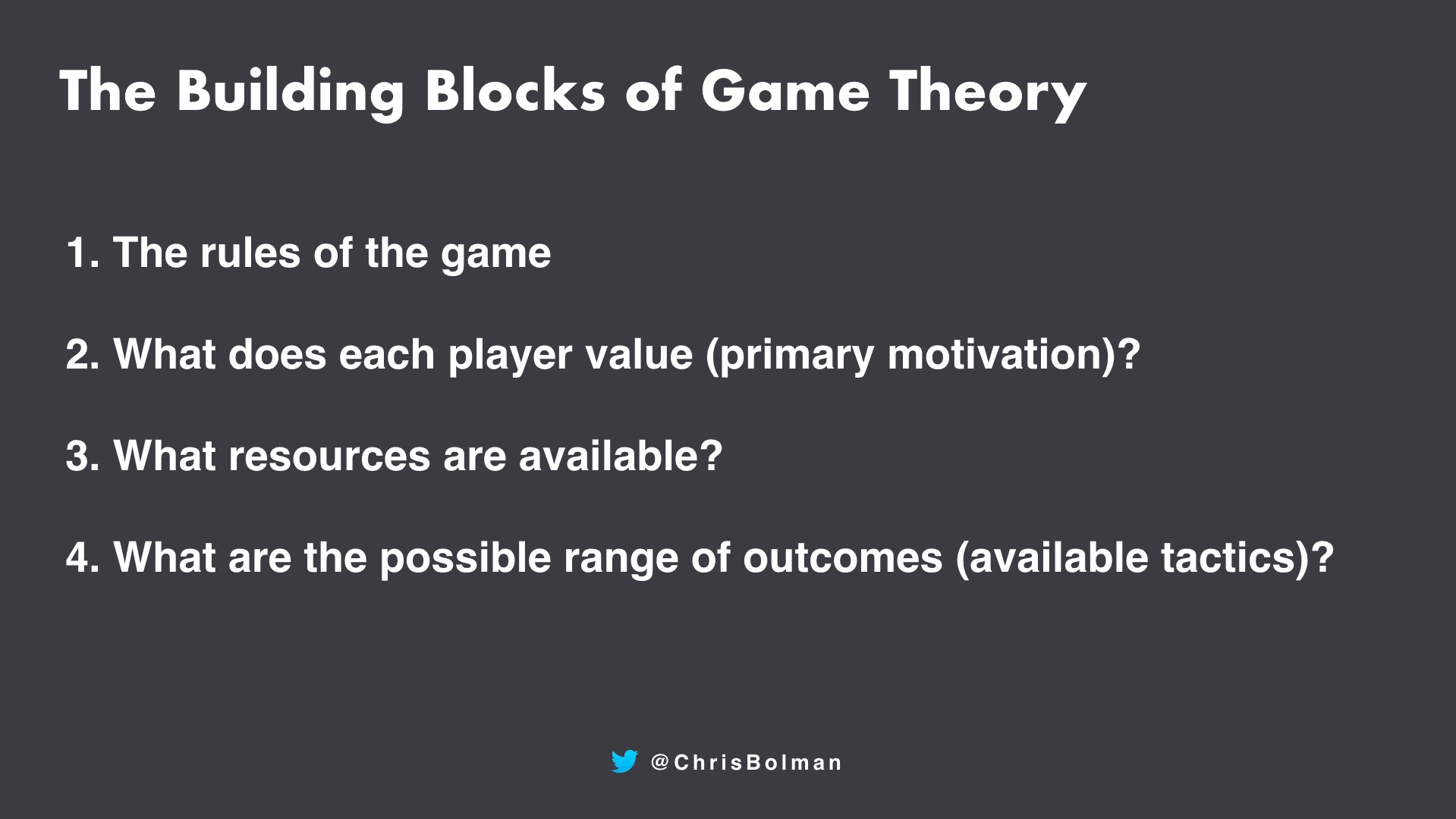Learning strategy is crucial for success in various aspects of life. LEARNS.EDU.VN provides a detailed roadmap on how to develop strategic thinking, offering actionable insights and resources. Unlock your strategic potential with our expert guidance and resources, covering decision-making frameworks, problem-solving techniques, and long-term planning skills.
1. Understanding the Essence of Strategy
Strategy is more than just a high-level concept; it’s an applied form of holistic problem-solving. According to Martin Weigel, strategy boils down to making sound, long-term decisions. He notes that every moment presents a choice, making everything strategic. This perspective reframes strategy as a goal-oriented form of logic. Strategic thinking involves understanding the big picture and how each action contributes to the overall objective. By viewing strategy as a continuous series of choices, individuals can approach problem-solving with a more comprehensive and adaptable mindset. This foundational understanding sets the stage for exploring effective methods to enhance strategic acumen.
2. Four Pillars of Learning Strategy
Improving strategic thinking involves four key areas: reading, observing, doing, and mentorship. Each of these pillars offers unique experiences and insights that contribute to a well-rounded understanding of strategy. These vectors provide diverse learning conditions that reinforce each other, fostering comprehensive strategic development. Let’s examine each pillar in detail.
2.1. Reading: Building a Theoretical Foundation
Reading is essential for understanding the theoretical underpinnings of strategy. Academic resources provide frameworks, case studies, and analyses that form the basis for strategic thinking.
- Books: “The Art of War” by Sun Tzu offers timeless principles of strategy applicable to various fields. “Competitive Strategy” by Michael Porter provides insights into industry analysis and competitive advantage.
- Academic Journals: Publications like the “Harvard Business Review” and “Strategic Management Journal” offer cutting-edge research and case studies on strategic management.
- Online Resources: Websites like McKinsey & Company and Boston Consulting Group provide articles and reports on current strategic issues.
These readings provide a broad understanding of strategic concepts. By engaging with diverse perspectives, learners can develop a nuanced understanding of the theories that inform effective strategy.
2.2. Observing: Learning from Real-World Examples
Observing strategists in action provides valuable insights into how strategy is applied in real-world scenarios.
- Case Studies: Analyzing successful and unsuccessful strategies from various industries can reveal critical factors and decision-making processes.
- Live Projects: Watching experienced strategists navigate complex projects offers practical lessons in problem-solving and adaptation.
- Industry Events: Attending conferences and seminars allows you to hear from and observe leading strategists discussing current challenges and innovative solutions.
Observing these elements helps in translating theoretical knowledge into practical understanding, essential for effective strategy implementation.
2.3. Doing: Practical Application and Experimentation
Practical experience is crucial for developing strategic thinking. Engaging in hands-on projects allows learners to apply theoretical knowledge and refine their skills through trial and error.
- Start a Small Business: Launching a small business provides a comprehensive learning experience, from market analysis to financial management.
- Manage a Blog or Social Media Presence: Growing a blog or social media presence requires strategic planning, content creation, and audience engagement.
- Participate in Simulations: Business simulations and strategy games offer a risk-free environment to test different approaches and learn from the outcomes.
By actively engaging in these activities, individuals can develop a deeper understanding of the practical challenges and rewards of strategic decision-making.
2.4. Mentorship: Guidance from Experienced Strategists
Mentorship provides invaluable guidance and support from experienced strategists. Mentors offer personalized advice, share their experiences, and help mentees navigate the complexities of strategic thinking.
- Networking: Attend industry events and join professional organizations to connect with potential mentors.
- Professional Development Programs: Many companies offer mentorship programs to support employee growth and development.
- Online Platforms: Platforms like LinkedIn can facilitate connections with experienced professionals willing to offer guidance.
Mentorship accelerates the learning process, providing personalized insights and encouragement.
3. Enhancing Long-Term Judgment Skills
Improving long-term judgment is essential for effective strategic thinking. Research suggests several methods to enhance this skill, including carving out space for reflection, acting as an outside observer, and broadening your focus.
3.1. Regularly Carve Out Space
Consistent reflection is critical for enhancing long-term judgment. Scheduling regular time off to detach from work allows for fresh perspectives and deeper insights.
- Monthly Off-Sites: Dedicate a day or afternoon each month to step away from your usual work environment.
- Long Walks: Use walks to clear your mind and think about your work in a new setting.
- Vacations: Taking breaks can improve creativity, learning retention, and emotional intelligence.
These practices support cognitive function and strategic clarity.
3.2. Act Like an Outside Observer
Evaluating situations from a third-person perspective can improve judgment. This approach encourages objectivity and reduces emotional bias.
- Third-Person Perspective: When facing a conflict, try to evaluate it as if you were an outside observer.
- Involve Others: Seek advice from friends, family members, or trusted advisors to gain different perspectives.
- Group Discussions: Participate in group discussions to understand diverse viewpoints and challenge your own assumptions.
This approach enhances the ability to make balanced and informed decisions.
3.3. Broaden Your Focus
Expanding the range of options considered can lead to better decision-making. By challenging self-imposed constraints, individuals can identify more creative and effective strategies.
- Generate Multiple Scenarios: Force yourself to come up with at least three different scenarios or options for every important decision.
- Trade-Off Analysis: Objectively evaluate the trade-offs associated with each option to make a more informed choice.
- Brainstorming Sessions: Conduct brainstorming sessions to generate a wide range of ideas and perspectives.
Broadening your focus enhances strategic flexibility and adaptability.
4. The Role of Game Theory in Strategic Thinking
Game theory provides a robust framework for developing strategic thinking skills. It involves analyzing interactions between individuals or entities, where the outcome of one’s actions depends on the actions of others.
- Chess and Poker: Playing these games can help develop strategic thinking, planning, and decision-making skills.
- Role-Playing and Simulation Games: These games provide a dynamic environment to test different strategies and learn from the outcomes.
- Academic Study: Studying game theory concepts and models provides a theoretical foundation for strategic analysis.
By engaging with game theory, individuals can learn to anticipate the actions of others, make informed decisions under uncertainty, and develop effective strategies for achieving their goals.
5. Integrating Learning with the Box Model
The learning box model offers a structured approach to strategic learning, dividing the learning process into four zones: theory, application, big picture, and technical detail. This model helps learners understand how different learning activities contribute to their overall strategic development.
5.1. Understanding the Learning Box Model
The learning box model maps learning across two dimensions: from theory to application and from big picture to technical detail. Each zone represents a different aspect of strategic thinking.
- Theory Zone: Focuses on understanding foundational concepts and principles.
- Application Zone: Emphasizes practical application and hands-on experience.
- Big Picture Zone: Involves understanding the overall context and strategic implications.
- Technical Detail Zone: Focuses on the specific skills and knowledge required for implementation.
By understanding these zones, learners can tailor their learning activities to develop a well-rounded understanding of strategy.
5.2. Mapping Learning Activities to the Box Model
Different learning activities map to different zones within the learning box model.
| Learning Activity | Zone(s) Addressed | Description |
|---|---|---|
| Reading Books | Theory, Big Picture | Provides foundational knowledge and understanding of strategic concepts. |
| Observing Strategists | Application, Big Picture | Offers practical insights into how strategy is applied in real-world scenarios. |
| Starting a Small Business | Application, Technical Detail | Provides hands-on experience in all aspects of strategic management, from planning to implementation. |
| Mentorship | Theory, Application | Offers personalized guidance and support from experienced strategists, bridging the gap between theory and practice. |
| Game Theory | Theory, Technical Detail | Develops strategic thinking skills through the analysis of interactions and decision-making under uncertainty. |
| Monthly Off-Sites | Big Picture | Detaches from daily routines to foster fresh perspectives and strategic insights. |
| Third-Person Perspective | Big Picture | Enhances objectivity and reduces emotional bias in decision-making. |
| Scenario Generation | Theory, Big Picture | Improves strategic flexibility and adaptability by considering multiple options and outcomes. |
| Case Studies | Theory, Application, | Provides real-world examples of successful and unsuccessful strategies, fostering practical insights. |




By strategically allocating learning activities across these zones, individuals can optimize their strategic development.
6. Key Takeaways for Aspiring Strategists
Becoming a better strategic thinker is a continuous journey that requires sound decision-making and the ability to adapt to change. Here are some key takeaways for aspiring strategists:
- Embrace Lifelong Learning: Strategy is an evolving field, so stay updated with the latest trends and research.
- Cultivate Curiosity: Ask questions, explore new ideas, and challenge your own assumptions.
- Develop Strong Communication Skills: Effectively communicate your strategic vision to inspire and motivate others.
- Seek Feedback: Actively solicit feedback from peers, mentors, and stakeholders to refine your strategic approach.
By integrating these practices into your professional life, you can continuously improve your strategic thinking and achieve your goals.
7. Applying Strategy in Different Contexts
Strategic thinking is applicable across various fields and contexts. Understanding how to tailor your strategic approach to different situations is crucial for success.
7.1. Business Strategy
In business, strategy involves defining a company’s mission, vision, and goals, and developing a plan to achieve them. Key elements include market analysis, competitive positioning, and resource allocation.
- Market Analysis: Understanding the market landscape, including customer needs, competitive dynamics, and industry trends.
- Competitive Positioning: Differentiating your company from competitors to gain a sustainable advantage.
- Resource Allocation: Efficiently allocating resources, such as capital, talent, and technology, to support strategic objectives.
Effective business strategy enables companies to achieve sustainable growth and profitability.
7.2. Marketing Strategy
Marketing strategy involves identifying target markets, developing compelling value propositions, and creating integrated marketing campaigns to reach and engage customers.
- Target Market: Identifying the specific customer segments that are most likely to purchase your products or services.
- Value Proposition: Clearly communicating the unique benefits and value that your products or services offer to customers.
- Integrated Marketing Campaigns: Coordinating marketing activities across multiple channels to create a consistent and impactful customer experience.
Effective marketing strategy drives customer acquisition, brand loyalty, and revenue growth.
7.3. Personal Strategy
Personal strategy involves defining your personal and professional goals and developing a plan to achieve them. This includes career planning, skill development, and personal branding.
- Career Planning: Identifying your career aspirations and developing a roadmap to achieve them.
- Skill Development: Continuously learning and developing new skills to enhance your professional capabilities.
- Personal Branding: Cultivating a positive and authentic personal brand to attract opportunities and build relationships.
Effective personal strategy empowers individuals to achieve their full potential and live fulfilling lives.
8. Tools and Resources for Learning Strategy
Numerous tools and resources can support your strategic learning journey. These include online courses, software tools, and professional organizations.
8.1. Online Courses
Online courses offer structured learning experiences, covering a wide range of strategic topics.
- Coursera: Offers courses on strategy, management, and leadership from top universities and business schools.
- edX: Provides courses on strategic thinking, decision-making, and game theory.
- Udemy: Features courses on business strategy, marketing strategy, and personal development.
These courses provide flexible and accessible learning opportunities for aspiring strategists.
8.2. Software Tools
Software tools can assist with strategic planning, analysis, and implementation.
- SWOT Analysis Templates: Help identify strengths, weaknesses, opportunities, and threats.
- Mind Mapping Software: Facilitates brainstorming and visual representation of strategic ideas.
- Project Management Software: Supports the planning, execution, and monitoring of strategic initiatives.
These tools streamline the strategic process and enhance decision-making.
8.3. Professional Organizations
Professional organizations provide networking opportunities, educational resources, and industry insights.
- Strategic Management Society: Offers conferences, publications, and resources for strategic management professionals.
- Association for Strategic Planning: Provides training, certification, and networking opportunities for strategic planners.
- Industry-Specific Associations: Offer resources and insights relevant to specific industries and strategic challenges.
These organizations support professional development and foster collaboration among strategists.
9. Case Studies: Real-World Examples of Strategic Thinking
Analyzing case studies provides valuable insights into how strategic thinking is applied in real-world scenarios. Here are a few examples:
9.1. Apple’s Innovation Strategy
Apple’s success is largely attributed to its innovative strategy, which focuses on creating user-friendly products that seamlessly integrate hardware and software.
- Key Elements:
- Emphasis on design and user experience.
- Development of a strong ecosystem of products and services.
- Continuous innovation and introduction of new products.
- Outcomes:
- High brand loyalty and customer satisfaction.
- Strong market position and financial performance.
- Establishment of a leading position in the technology industry.
9.2. Netflix’s Disruption of the Entertainment Industry
Netflix disrupted the entertainment industry by offering a subscription-based streaming service that provided on-demand access to a vast library of movies and TV shows.
- Key Elements:
- Focus on customer convenience and affordability.
- Investment in original content to differentiate its offerings.
- Use of data analytics to personalize recommendations and improve user experience.
- Outcomes:
- Significant growth in subscriber base and revenue.
- Disruption of traditional media companies.
- Establishment of a leading position in the streaming industry.
9.3. Tesla’s Electric Vehicle Strategy
Tesla revolutionized the automotive industry by developing high-performance electric vehicles and a comprehensive charging infrastructure.
- Key Elements:
- Focus on innovation and sustainability.
- Development of cutting-edge battery technology.
- Establishment of a network of supercharging stations.
- Outcomes:
- Increased adoption of electric vehicles.
- Establishment of a leading position in the electric vehicle market.
- Acceleration of the transition to sustainable transportation.
10. Overcoming Challenges in Learning Strategy
Learning strategy can be challenging, but with the right approach and resources, these challenges can be overcome.
10.1. Information Overload
With the vast amount of information available, it can be difficult to know where to start. Focus on reputable sources, prioritize foundational concepts, and seek guidance from experienced strategists.
10.2. Lack of Practical Experience
Gain practical experience by starting small projects, volunteering, or participating in simulations. The more you apply your knowledge, the better you will become at strategic thinking.
10.3. Difficulty Applying Theory
Bridge the gap between theory and practice by analyzing case studies, seeking mentorship, and actively applying strategic concepts to real-world situations.
10.4. Resistance to Change
Strategy often involves challenging the status quo, which can be met with resistance. Develop strong communication skills, build consensus, and demonstrate the benefits of your strategic approach.
FAQ: Frequently Asked Questions About Learning Strategy
- What is strategy, and why is it important? Strategy is a comprehensive plan to achieve specific goals. It is important because it provides direction, helps allocate resources effectively, and enables adaptation to change.
- What are the key components of strategic thinking? Key components include analyzing the situation, setting objectives, identifying options, making decisions, and implementing plans.
- How can I improve my strategic thinking skills? Improve your skills through reading, observing, doing, mentorship, and continuously reflecting on your experiences.
- What are some common mistakes in strategic planning? Common mistakes include failing to analyze the environment, setting unrealistic goals, and neglecting implementation.
- How can I apply strategic thinking to my career? Apply strategic thinking by setting career goals, identifying skills to develop, and networking to find opportunities.
- What role does innovation play in strategy? Innovation is crucial for creating competitive advantage and adapting to changing market conditions.
- How can I measure the success of a strategic plan? Measure success through key performance indicators (KPIs) that align with your strategic objectives.
- What resources are available for learning more about strategy? Resources include books, online courses, professional organizations, and case studies.
- How does game theory relate to strategic thinking? Game theory provides a framework for analyzing interactions and making decisions in competitive situations.
- What are the ethical considerations in strategic decision-making? Ethical considerations include transparency, fairness, and the impact of decisions on stakeholders.
By addressing these frequently asked questions, learners can gain a deeper understanding of strategy and its practical applications.
Learning strategy is a lifelong journey that requires dedication, curiosity, and a willingness to adapt. By integrating the principles and practices outlined in this guide, you can develop your strategic thinking skills and achieve your goals. Remember, LEARNS.EDU.VN offers a wealth of additional resources and courses to further support your learning journey.
Ready to take your strategic thinking to the next level? Visit LEARNS.EDU.VN today to explore our comprehensive resources and courses. Our expert-led programs provide the knowledge, skills, and tools you need to excel in any strategic endeavor. Contact us at 123 Education Way, Learnville, CA 90210, United States, or reach out via Whatsapp at +1 555-555-1212. Start your journey toward strategic mastery with learns.edu.vn today.